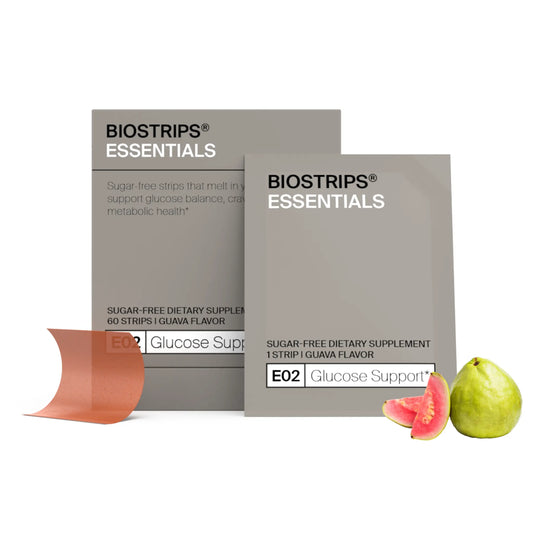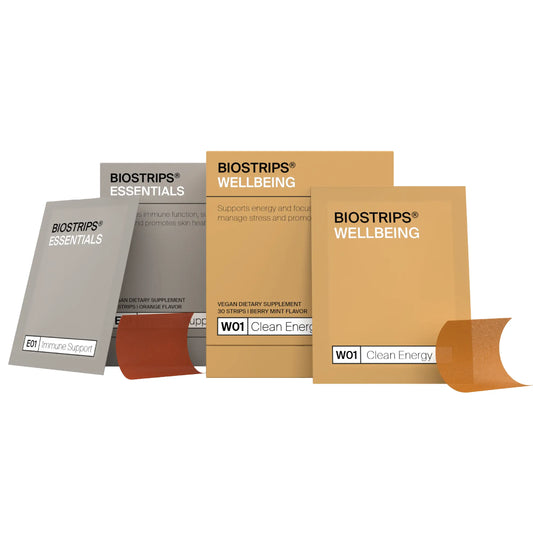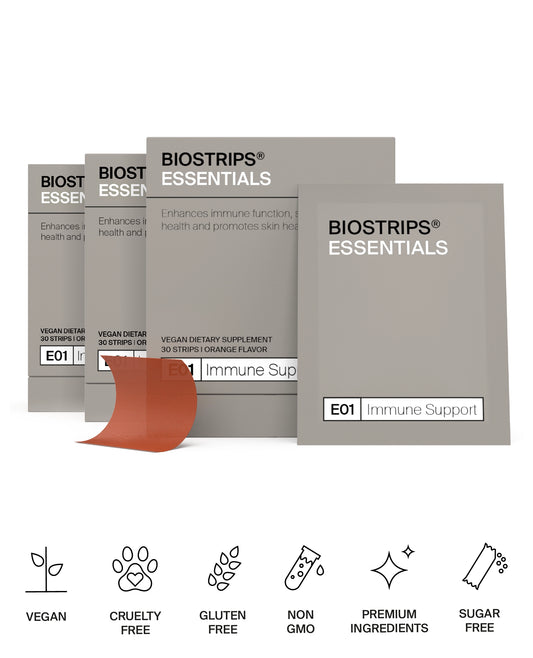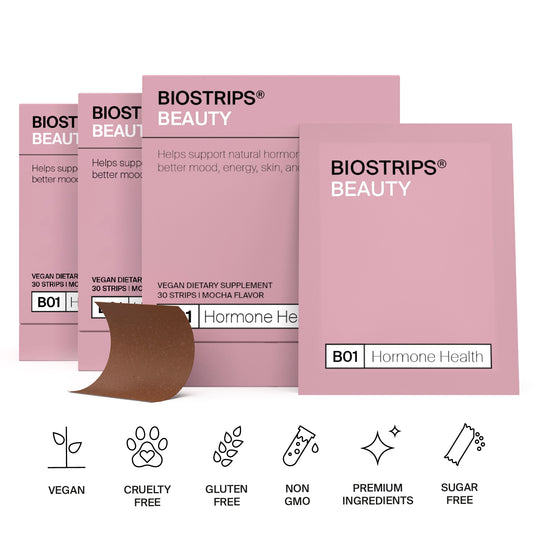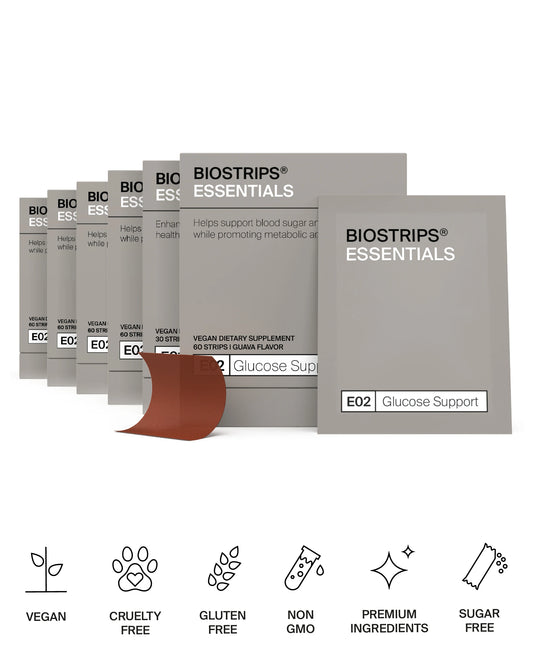Hormone Support Food and Herb Guide
Key Points
- Comprehensive Guide: This article provides an in-depth look at foods and herbs that support hormonal balance, catering to different phases of the menstrual cycle and overall hormonal health.
- Natural Ingredients: Focuses on the natural mechanisms by which specific foods and herbs influence hormonal balance, including their roles in reducing stress, supporting energy levels, and enhancing overall well-being.
- Phase-Specific Recommendations: Detailed suggestions for dietary changes and herb incorporation tailored to the follicular, ovulatory, and luteal phases of the menstrual cycle.
- Adaptogens and Herbs: Highlights powerful adaptogens and herbs like Ashwagandha, Rhodiola Rosea, and Holy Basil, which help manage stress and support hormone regulation.
- Science-Backed Benefits: Discusses the mechanisms by which these foods and herbs work to balance hormones, reduce PMS symptoms, support reproductive health, and improve skin and mood.
Introduction
Hormonal balance is integral to every aspect of health, influencing not just reproductive health but also mood, energy levels, sleep quality, skin health, and overall well-being. Hormones act as the body's chemical messengers, coordinating a range of physiological processes. When these hormones are out of balance, it can lead to a cascade of health issues, including mood swings, fatigue, skin problems, and more severe conditions like polycystic ovary syndrome (PCOS) or thyroid disorders.
However, maintaining hormonal health doesn't always require pharmaceuticals. Nature offers a wealth of foods and herbs that can help regulate hormone production, reduce stress, and support overall hormonal function. This guide explores these natural options, focusing on how specific foods and herbs can be used to maintain and restore hormonal balance. Whether you are dealing with the challenges of PMS, looking to improve your energy levels, or simply seeking to support your body’s natural rhythms, the right dietary choices can make a significant difference.
In the following sections, we will delve into phase-specific dietary recommendations tailored to the menstrual cycle, as well as explore the powerful adaptogens and herbs that can provide ongoing support for your hormonal health. By understanding and incorporating these natural remedies into your daily routine, you can take proactive steps toward achieving and maintaining hormonal balance.
Hormone-Supporting Foods for the Follicular Phase (Days 1-14)
The follicular phase of the menstrual cycle begins on the first day of menstruation and continues until ovulation. During this phase, the body is in a state of renewal and preparation, with estrogen levels gradually rising as the body prepares for ovulation. The foods you consume during this time can play a crucial role in supporting these hormonal changes, aiding in energy production, reducing PMS symptoms, and preparing the body for the upcoming ovulatory phase.
Key Foods to Include
- Leafy Greens (Spinach, Kale)
- Mechanism: Leafy greens are rich in magnesium and iron, two essential nutrients that support energy production and reduce PMS symptoms. Magnesium helps relax muscles and nerves, while iron is vital for the production of hemoglobin, which carries oxygen to your cells.
- Utility: These greens enhance detoxification processes in the liver, which is crucial for metabolizing and excreting excess estrogen. By supporting the liver, leafy greens help maintain balanced hormone levels, reducing the risk of estrogen dominance that can lead to PMS symptoms like bloating and mood swings.
- Berries (Blueberries, Strawberries)
- Mechanism: Berries are packed with antioxidants, including vitamin C and anthocyanins, which protect cells from oxidative stress and support collagen production. The antioxidants found in berries also help reduce inflammation, a common issue that can exacerbate PMS symptoms.
- Utility: Consuming berries during the follicular phase can support cellular repair and regeneration, laying the groundwork for healthier skin and improved energy levels as the body prepares for ovulation.
- Oats
- Mechanism: Oats are a rich source of fiber and B vitamins, particularly B6, which is essential for regulating mood and energy levels. The complex carbohydrates in oats help stabilize blood sugar levels, preventing the energy crashes that can occur during this phase.
- Utility: By providing sustained energy and supporting stable blood sugar levels, oats help reduce mood swings and irritability, common issues during the early days of the menstrual cycle. The fiber in oats also supports healthy digestion and helps the body eliminate excess hormones.
- Nuts and Seeds (Flaxseeds, Chia Seeds)
- Mechanism: Flaxseeds and chia seeds are high in omega-3 fatty acids and lignans, which have estrogen-modulating properties. Omega-3s are anti-inflammatory, helping to reduce inflammation that can disrupt hormonal balance, while lignans support the healthy metabolism of estrogen.
- Utility: Including these seeds in your diet during the follicular phase can help balance estrogen levels, support heart health, and reduce inflammation. The healthy fats in nuts and seeds also promote satiety and energy stability, contributing to a smoother menstrual cycle.
How to Incorporate These Foods
To maximize the benefits of these hormone-supporting foods, try incorporating them into your meals in a variety of ways:
- Smoothies: Add a handful of spinach or kale, a scoop of flaxseeds, and a mix of berries to your morning smoothie for a nutrient-packed start to your day.
- Salads: Toss fresh berries and chopped nuts or seeds into your salads for a satisfying and hormone-balancing lunch.
- Oatmeal: Start your day with a bowl of oatmeal topped with chia seeds and fresh fruit to keep your energy levels steady throughout the day.
- Snacks: Keep a mix of nuts and seeds on hand for a quick and nutritious snack that supports hormonal balance.
By focusing on these nutrient-dense foods during the follicular phase, you can help your body navigate the menstrual cycle with greater ease and less discomfort. These dietary choices not only support hormonal health but also lay the foundation for overall well-being, setting the stage for a balanced and healthy cycle.
Hormone-Supporting Foods for the Ovulatory Phase (Days 15-17)
The ovulatory phase is a short but crucial period in the menstrual cycle, typically occurring around the midpoint. During this phase, estrogen levels peak, and luteinizing hormone (LH) surges to trigger the release of an egg from the ovary. This phase is characterized by increased energy and vitality, but it also demands specific nutritional support to ensure hormonal balance and overall well-being. The foods you choose during the ovulatory phase can help optimize hormone levels, support detoxification, and maintain stable energy levels.
Key Foods to Include
- Avocado
- Mechanism: Avocados are rich in healthy monounsaturated fats, potassium, and fiber. These nutrients support hormone production and balance blood sugar levels. Potassium, in particular, helps regulate blood pressure, which can fluctuate due to hormonal changes during ovulation.
- Utility: The healthy fats in avocados are essential for synthesizing hormones like estrogen and progesterone. By incorporating avocados into your diet, you help support a stable hormonal environment, which can enhance fertility and reduce the risk of estrogen dominance. Additionally, the fiber content aids digestion and helps eliminate excess hormones, contributing to overall hormonal balance.
- Quinoa
- Mechanism: Quinoa is a complete protein, meaning it contains all nine essential amino acids that your body needs but cannot produce on its own. It is also high in complex carbohydrates and fiber, which provide sustained energy and support blood sugar stability.
- Utility: The amino acids in quinoa are critical for the production of hormones, enzymes, and neurotransmitters that regulate mood and energy levels. During the ovulatory phase, when energy demands are high, quinoa helps maintain a steady supply of nutrients to support both physical and mental performance. Its complex carbohydrates ensure that your energy levels remain stable, reducing the risk of energy crashes that can occur during this phase.
- Salmon
- Mechanism: Salmon is an excellent source of omega-3 fatty acids, particularly EPA and DHA, which have anti-inflammatory properties and support brain health. These fatty acids are also involved in the production of prostaglandins, hormone-like substances that play a role in regulating the menstrual cycle.
- Utility: Omega-3 fatty acids are essential for reducing inflammation, which can be heightened during the ovulatory phase. By including salmon in your diet, you support brain function, enhance mood stability, and promote a balanced inflammatory response, all of which are crucial for maintaining hormonal balance during ovulation. Additionally, the high-quality protein in salmon helps sustain energy and supports overall hormone health.
- Citrus Fruits (Oranges, Grapefruits)
- Mechanism: Citrus fruits are high in vitamin C, a powerful antioxidant that supports collagen production, boosts the immune system, and reduces oxidative stress. Vitamin C also plays a role in the metabolism of cholesterol into hormones, including progesterone.
- Utility: The antioxidant properties of citrus fruits help protect your cells from damage caused by free radicals, which can be elevated during the ovulatory phase. By consuming citrus fruits, you support healthy skin, enhance collagen production, and assist in the detoxification process, which is essential for maintaining hormonal balance. The natural sugars in these fruits provide a quick energy boost, making them an ideal snack during this high-energy phase.
How to Incorporate These Foods
To optimize your diet during the ovulatory phase, consider the following meal and snack ideas:
- Breakfast: Start your day with a protein-rich quinoa bowl topped with avocado slices, a squeeze of lime, and a sprinkle of seeds for added texture and nutrition.
- Lunch: A fresh salad featuring mixed greens, grilled salmon, and segments of citrus fruits can provide a balanced meal that supports both hormonal and overall health.
- Snacks: Enjoy a simple and refreshing snack by pairing citrus fruits like oranges or grapefruits with a handful of nuts or seeds for sustained energy.
- Dinner: Include a serving of grilled or baked salmon with a side of quinoa and roasted vegetables, ensuring that your meal is packed with nutrients that support the ovulatory phase.
By focusing on these foods during the ovulatory phase, you can support the natural hormonal fluctuations that occur and ensure that your body has the nutrients it needs to function optimally. These dietary choices not only enhance fertility and hormone production but also contribute to overall vitality and well-being.
Hormone-Supporting Foods for the Luteal Phase (Days 18-28)
The luteal phase begins after ovulation and lasts until the start of the next menstrual period. During this phase, progesterone levels rise to prepare the body for a potential pregnancy. If fertilization does not occur, both progesterone and estrogen levels drop, leading to the onset of menstruation. This phase can be challenging for many women, as symptoms of premenstrual syndrome (PMS) such as mood swings, bloating, fatigue, and cravings can manifest. The right foods during the luteal phase can help manage these symptoms by stabilizing blood sugar, supporting hormone production, and reducing inflammation.
Key Foods to Include
- Sweet Potatoes
- Mechanism: Sweet potatoes are rich in complex carbohydrates and beta-carotene, a precursor to vitamin A. These nutrients are crucial for stabilizing blood sugar levels and supporting the production of progesterone, a hormone that is essential during the luteal phase.
- Utility: The complex carbohydrates in sweet potatoes help to stabilize blood sugar, preventing the energy crashes and cravings often associated with PMS. Beta-carotene is converted into vitamin A in the body, which supports the production of progesterone and helps maintain a healthy reproductive system. Additionally, the fiber in sweet potatoes aids digestion and helps prevent bloating, a common luteal phase symptom.
- Dark Chocolate (70% or Higher)
- Mechanism: Dark chocolate is high in magnesium, an essential mineral that plays a key role in muscle relaxation, mood regulation, and the reduction of PMS symptoms. It is also rich in antioxidants that help reduce inflammation and support overall well-being.
- Utility: Consuming dark chocolate during the luteal phase can help alleviate common PMS symptoms such as irritability, cramps, and fatigue. Magnesium helps relax muscles, including those of the uterus, reducing cramps. The antioxidants in dark chocolate support mental clarity and mood stabilization, making it a comforting and health-supportive treat during this phase.
- Eggs
- Mechanism: Eggs are a rich source of high-quality protein, healthy fats, and essential nutrients such as vitamin D, choline, and selenium. These nutrients support hormone production, energy levels, and overall health.
- Utility: The protein and healthy fats in eggs provide sustained energy, which is especially important during the luteal phase when fatigue can set in. Choline is crucial for brain health and neurotransmitter function, which can help regulate mood. Vitamin D and selenium support immune function and hormone balance, making eggs a comprehensive food choice for this phase of the cycle.
- Broccoli
- Mechanism: Broccoli contains DIM (Diindolylmethane), a compound that supports estrogen metabolism and helps balance hormone levels. It is also rich in fiber, vitamins, and minerals that support overall health.
- Utility: DIM aids in the proper metabolism of estrogen, helping to prevent estrogen dominance, which can exacerbate PMS symptoms like bloating and mood swings. The high fiber content in broccoli supports digestive health and helps with the elimination of excess hormones, reducing the risk of hormonal imbalances. Additionally, the antioxidants in broccoli support overall health and reduce inflammation, making it an ideal food for the luteal phase.
How to Incorporate These Foods
Incorporating these hormone-supporting foods into your diet during the luteal phase can help alleviate PMS symptoms and support overall hormonal balance:
- Breakfast: Start your day with a nutrient-rich omelet made with eggs and a side of roasted sweet potatoes for sustained energy and balanced blood sugar levels.
- Lunch: Enjoy a hearty salad with mixed greens, steamed broccoli, and a piece of dark chocolate for dessert to help curb cravings and support your mood.
- Snacks: Keep it simple with slices of sweet potato roasted with olive oil and sprinkled with sea salt, or enjoy a few squares of high-quality dark chocolate to satisfy your sweet tooth while supporting your magnesium levels.
- Dinner: A balanced meal of grilled chicken or fish with a side of broccoli and sweet potato mash provides the nutrients your body needs to maintain hormonal balance and reduce PMS symptoms.
Additional Herbs and Adaptogens for Luteal Phase Support
Alongside these foods, certain herbs and adaptogens can further support your body during the luteal phase:
- Ashwagandha: An adaptogen that helps reduce stress and balance cortisol levels, which can be particularly beneficial during the luteal phase when stress and anxiety may increase.
- Turmeric: Known for its anti-inflammatory properties, turmeric can help reduce the inflammation associated with PMS and support overall well-being.
- Fennel: This herb helps soothe digestion and reduce bloating, common issues during the luteal phase.
By focusing on these nutrient-dense foods and supportive herbs, you can help your body navigate the luteal phase with greater ease, reducing the discomfort of PMS and supporting overall hormonal balance. These dietary choices not only enhance your physical well-being but also contribute to a more stable mood and improved energy levels during this often challenging phase of the menstrual cycle.
Phases of the Menstrual Cycle and Recommended Foods
Understanding the phases of the menstrual cycle and the specific nutritional needs during each phase can significantly enhance hormonal balance and overall well-being. This section provides a detailed guide on the best foods and herbs to incorporate during each phase, with insights into their Ayurvedic properties and utilities.
Menstrual Phase (Days 1-5)
During the menstrual phase, hormone levels, particularly estrogen and progesterone, are at their lowest. This is a time when the body needs extra support for blood building and alleviating menstrual cramps. Focusing on iron-rich foods and warming, nourishing meals can help provide the necessary support.
Recommended Foods:
- Iron-Rich Foods: Beets, leafy greens like spinach and kale, and lentils are excellent choices. These foods help replenish iron levels, support blood production, and reduce fatigue.
- Warm Foods: Soups, stews, and warm herbal teas such as ginger and chamomile provide comfort, improve circulation, and help alleviate cramps.
Herbs and Spices:
- Ginger: Known for its anti-inflammatory properties, ginger can help reduce menstrual cramps.
- Turmeric: This powerful anti-inflammatory spice supports overall health and can help ease discomfort during menstruation.
Incorporating these foods and spices during the menstrual phase can help manage symptoms, improve energy levels, and support overall well-being.
Follicular Phase (Days 6-14)
The follicular phase marks the beginning of the menstrual cycle, following menstruation. During this phase, estrogen levels start to rise as the body prepares for ovulation, leading to increased energy levels and a sense of renewal. Supporting these hormonal changes with the right foods can enhance your body's natural processes.
Recommended Foods:
- Leafy Greens: Spinach, kale, and arugula are excellent choices during this phase. These cooling, Pitta-balancing greens support liver detoxification and hormone metabolism, which is crucial as estrogen levels increase.
- Whole Grains: Quinoa, brown rice, and oats provide nourishing, grounding energy. These complex carbohydrates help stabilize blood sugar and provide sustained energy, supporting your body’s increased activity.
Herbs and Spices:
- Fennel: This cooling herb supports digestion, which is important as your body’s energy levels rise.
- Mint: Mint soothes the digestive system and provides a refreshing balance, helping to maintain the body’s equilibrium during this phase.
Incorporating these foods and herbs during the follicular phase can help support rising energy levels, optimize hormone metabolism, and prepare your body for the ovulatory phase.
Ovulatory Phase (Days 15-17)
The ovulatory phase is a brief but pivotal time in the menstrual cycle when estrogen reaches its peak, triggering a surge in luteinizing hormone (LH) that leads to ovulation. This phase is characterized by increased energy and vitality, making it an optimal time to support your body with specific foods that aid in hormone regulation and detoxification.
Recommended Foods:
- Cruciferous Vegetables: Broccoli, Brussels sprouts, and cauliflower are excellent choices during this phase. These Pitta-balancing, detoxifying vegetables support estrogen metabolism and help the body eliminate excess hormones, maintaining a healthy hormonal balance.
- Healthy Fats: Avocados, nuts (such as almonds and walnuts), and seeds (like chia and flax) are nourishing options that support hormone synthesis and reduce inflammation. These fats are vital for maintaining energy levels and overall hormonal health.
Herbs and Spices:
- Basil: An adaptogenic herb that supports adrenal health, helping your body manage stress and maintain balanced energy during this high-vitality phase.
- Cinnamon: This spice is excellent for balancing blood sugar, which helps to sustain energy levels and prevent fluctuations that can impact mood and well-being.
Incorporating these foods and herbs during the ovulatory phase can help optimize hormone function, support detoxification, and maintain the heightened energy and vitality that are characteristic of this phase.
Luteal Phase (Days 18-28)
The luteal phase occurs after ovulation and lasts until the start of the next menstrual period. During this phase, progesterone levels rise to prepare the body for a potential pregnancy. If fertilization doesn’t occur, hormone levels drop, which can lead to premenstrual syndrome (PMS) symptoms such as mood swings, bloating, and cravings. The right foods can help manage these symptoms by stabilizing blood sugar, supporting hormone production, and reducing inflammation.
Recommended Foods:
- Root Vegetables: Sweet potatoes, carrots, and beets are grounding and Vata-balancing, making them ideal for this phase. These vegetables help stabilize blood sugar levels and support hormone production, reducing the likelihood of PMS-related discomfort.
- Complex Carbohydrates: Whole grains and legumes provide nourishing, grounding energy. These foods offer sustained energy and help curb cravings, which are common during the luteal phase.
Herbs and Spices:
- Ashwagandha: This adaptogenic herb is excellent for reducing stress and balancing cortisol levels, which can help mitigate mood swings and anxiety during the luteal phase.
- Turmeric: Known for its anti-inflammatory properties, turmeric supports overall health and can help reduce the inflammation and discomfort associated with PMS.
- Fennel: Fennel is cooling and supports digestion, helping to reduce bloating and maintain comfort during this phase.
Incorporating these foods and herbs during the luteal phase can help manage PMS symptoms, support hormonal balance, and maintain overall well-being as the body transitions to the next menstrual cycle.
Summary of Foods and Herbs for Each Phase
|
Phase |
Foods |
Ayurvedic Properties |
Mechanism |
Utility |
|
Menstrual |
Beets, leafy greens, lentils, soups, stews, ginger tea |
Grounding, nourishing, heating |
Blood building, anti-inflammatory |
Supports blood building, reduces cramps |
|
Follicular |
Leafy greens, quinoa, brown rice, oats, mint tea |
Cooling, nourishing, grounding |
Detoxification, sustained energy |
Supports liver detox, hormone metabolism, sustained energy |
|
Ovulatory |
Cruciferous veggies, avocados, nuts, seeds, basil |
Balancing, detoxifying, nourishing |
Estrogen metabolism, hormone synthesis |
Supports estrogen metabolism, hormone synthesis, energy |
|
Luteal |
Root vegetables, sweet potatoes, whole grains, legumes, fennel tea |
Grounding, nourishing |
Summary Tables
Foods for Different Menstrual Cycle Phases
|
Phase |
Food |
Mechanism |
Utility |
|
Follicular |
Leafy Greens |
Magnesium, iron |
Energy support, PMS symptom reduction |
|
Berries |
Antioxidants, vitamins |
Cellular repair, inflammation reduction |
|
|
Oats |
Fiber, B vitamins |
Energy stabilization, blood sugar control |
|
|
Nuts and Seeds |
Omega-3s, lignans |
Hormone balance, inflammation reduction |
|
|
Ovulatory |
Avocado |
Healthy fats, potassium |
Hormone production, blood sugar balance |
|
Quinoa |
Protein, essential amino acids |
Sustained energy, overall hormone health |
|
|
Salmon |
Omega-3 fatty acids |
Inflammation reduction, brain health |
|
|
Citrus Fruits |
Vitamin C |
Collagen production, oxidative stress reduction |
|
|
Luteal |
Sweet Potatoes |
Complex carbohydrates, vitamin A |
Blood sugar stabilization, progesterone support |
|
Dark Chocolate |
Magnesium, antioxidants |
PMS symptom reduction, mood improvement |
|
|
Eggs |
Protein, essential nutrients |
Hormone production, sustained energy |
|
|
Broccoli |
DIM |
Estrogen metabolism, PMS symptom reduction |
Herbs, Mushrooms, and Adaptogens for Hormone Health
|
Herb/Adaptogen |
Mechanism |
Utility |
|
Ashwagandha |
Modulates endocrine system |
Reduces stress, balances cortisol |
|
Rhodiola Rosea |
Supports adrenal glands |
Enhances energy, reduces fatigue |
|
Reishi Mushroom |
Supports immune system, reduces inflammation |
Enhances vitality, supports hormonal balance |
|
Holy Basil |
Modulates stress responses |
Reduces stress, supports adrenal health |
Ingredients in Hormone Health Strip
|
Ingredient |
Mechanism |
Utility |
|
Ginseng |
Regulates endocrine system, reduces stress |
Supports hormonal balance, improves energy levels |
|
Maca Root |
Supports HPA axis, influences hormonal balance |
Enhances energy, libido, mood, balances hormones |
|
Vitex |
Modulates pituitary gland, balances prolactin |
Reduces PMS symptoms, regulates menstrual cycles |
|
Suntheanine |
Promotes relaxation, modulates neurotransmitters |
Reduces stress-induced hormone imbalances, supports mental well-being |
Conclusion
Hormonal health is a critical aspect of overall well-being, influencing everything from energy levels and mood to skin health and reproductive function. This guide has provided a comprehensive look at how specific foods and herbs can support hormonal balance, both in a general sense and through the distinct phases of the menstrual cycle.
Throughout the different phases—menstrual, follicular, ovulatory, and luteal—your body requires varying nutritional support to optimize hormone production, metabolism, and balance. By incorporating iron-rich foods during menstruation, detoxifying greens during the follicular phase, hormone-supporting healthy fats during ovulation, and grounding root vegetables during the luteal phase, you can work with your body’s natural rhythms to maintain harmony and well-being.
Additionally, the use of powerful adaptogens and herbs like Ashwagandha, Rhodiola Rosea, and turmeric can further enhance your body’s ability to manage stress, reduce inflammation, and support overall hormonal health. These natural interventions provide a holistic approach to managing the challenges associated with hormonal fluctuations and imbalances.
By integrating these dietary and herbal strategies into your daily life, you are not only addressing immediate symptoms but also laying the foundation for long-term hormonal health. Whether you are seeking to alleviate PMS symptoms, boost energy levels, or simply feel more in tune with your body, this guide offers practical, actionable steps to help you achieve those goals.
Taking control of your hormonal health through mindful nutrition and natural remedies empowers you to live with greater ease, vitality, and balance. Embrace these insights as part of your wellness journey, and enjoy the benefits of a more harmonious and healthful life.
